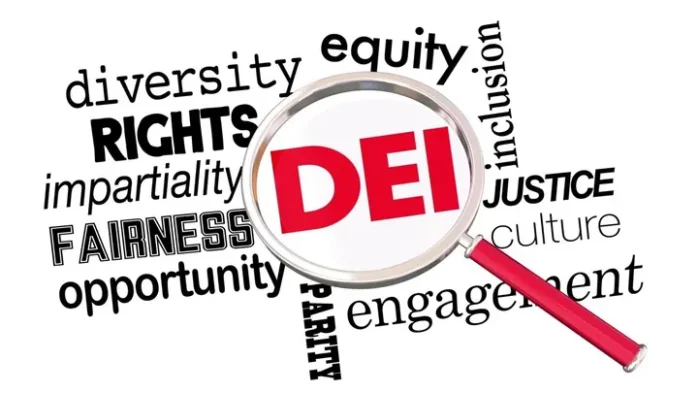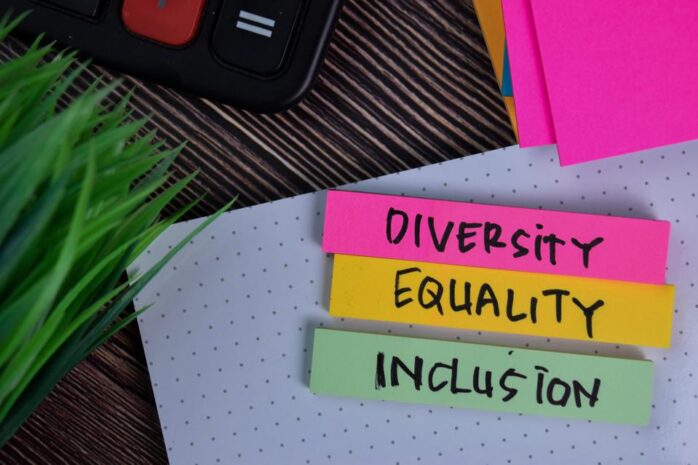Never before has the role and importance of diversity, equity, and inclusion been more highlighted in the workplace. As workplaces become increasingly diverse, organizations need to recognize their responsibility to create a welcoming environment that respects and values everyone’s unique backgrounds and experiences. Today, we will share some practical strategies for creating a more equitable and inclusive workplace and how organizations can create a culture of belonging and respect.
Why Diversity, Equity, and Inclusion Matters

Let’s begin by discussing why diversity, equity, and inclusion are essential for any organization and how they can positively impact workplace culture.
- Diversity means recognizing that people differ from one another in terms of race, gender, religion, sexual orientation, age, ability level, or other characteristics. It’s important to recognize these differences to foster colleagues’ understanding and appreciation.
- Equity means valuing everyone equally and providing access to resources regardless of their background or identity.
- Inclusion refers to creating an environment where people feel valued and respected for their unique perspectives, experiences, and backgrounds.
With a focus on diversity, equity, and inclusion in the workplace, organizations can create a stronger sense of team spirit by fostering a culture of respect that values everyone’s contributions.
8 Practical strategies for implementing diversity, equity, and inclusion in the workplace

Next, here are eight actionable steps organizations can take to ensure diversity, equity, and inclusion in the workplace:
1. Identify where change is needed
The first step in implementing DEI practices is to identify areas where changes are needed.
Companies should do an honest assessment of their current workplace environment. When they uncover these areas, they may notice inequality, a lack of diversity, or potential biases or prejudices that may exist. They can do this by conducting employee surveys and focus groups.
Based on the results of this assessment, organizations should create a plan to address any issues and ensure everyone in the workplace is treated fairly. For example, this could include instituting anti-discrimination policies or creating mentorship programs.
2. Set goals and create a DEI plan

When implementing diversity, equity, and inclusion in the workplace, creating a clear action plan is essential. Goals should be set specific and measurable, with timelines for completion. This plan should include strategies for recruiting diverse talent, providing employee development opportunities, implementing anti-discrimination policies, etc.
Your plan should also include initiatives to create a culture of belonging and respect. This could include creating employee resource groups, hosting diversity-focused events, or providing unconscious bias training.
3. Ensure access to resources and education
A key part of promoting diversity, equity, and inclusion in the workplace is ensuring all employees have equal access to resources and education. Companies should provide training on topics such as privilege awareness and unconscious bias. Organizations should also ensure all job postings are accessible by providing resources in multiple languages and offering accommodations such as flexible work schedules or providing online job boards.
Speaking of education, you might also consider registering for a diversity and inclusion online course. That way, you’ll be able to learn best practices and apply them in the workplace.
4. Provide opportunities for feedback
The DEI plan should also include mechanisms for employees to provide feedback on their experience in the workplace. Suggestion boxes, anonymous surveys, and focus groups are all great ways to solicit honest employee input. Companies should also consider appointing a diversity officer or committee to ensure that employee voices are heard, and issues are identified quickly.
When it comes to feedback, acting on it is even more important than hearing it. Organizations should commit to taking action on the feedback they receive and be sure to communicate back to employees about any changes that have been implemented or are in progress.
5. Recognize and celebrate successes

Recognizing successes when implementing diversity, equity, and inclusion initiatives in the workplace is important. Celebrating small achievements incentivizes employees to continue working towards further progress with DEI goals. Acknowledging these accomplishments publicly can also show other organizations what is possible when investing in DEI initiatives.
6. Be open to change
Organizations should also be willing and open to making changes based on feedback from employees and external organizations. Companies need to remain receptive and flexible to address any potential issues quickly, without resistance or hesitation. Companies should also strive to create a safe space where diverse voices can be heard without fear of retribution or judgment.
If an organization’s culture is resistant to change, it’s helpful to reassess the DEI plan and look for ways to make it more effective. Companies should focus on fostering a culture of openness and inclusivity that encourages everyone to participate in conversations about diversity, equity, and inclusion. Doing so will help to create an environment where employees feel respected and accepted for who they are.
7. Encourage allies

It is essential to encourage allies who are supportive of diversity, equity, and inclusion initiatives within the workplace. Allies can help foster an inclusive environment by advocating for marginalized groups and standing up against discrimination and microaggressions in the workplace. For example, allies can speak up when they see something not aligned with the company’s DEI goals and values.
Organizations should also strive to create a culture of support, where everyone feels comfortable speaking up about diversity, equity, and inclusion issues. This could be achieved by providing education on topics such as privilege awareness, unconscious bias training, and identifying microaggressions or discriminatory behaviors. Ultimately, encouraging allyship helps ensure everyone feels safe and respected in the workplace.
8. Encourage open dialogue
Open and honest dialogue between managers, employees, and other stakeholders is key to creating a diverse, equitable, and inclusive workplace. Encouraging conversations about diversity issues in the workplace allows people to share their perspectives, experiences, and views on DEI initiatives. It also helps create an environment of understanding where everyone feels comfortable expressing themselves without fear of judgment or backlash.
Final Thoughts
Creating an environment of diversity, equity, and inclusion in the workplace cannot be achieved overnight. It requires dedication, commitment, and effort from everyone involved.
By implementing feedback loops, recognizing achievements, being open to change, encouraging allies, and open dialogue, organizations can move closer to creating a truly equitable workplace for all.



















